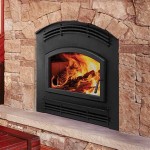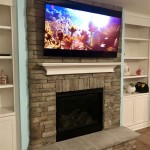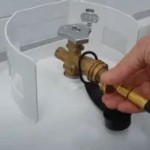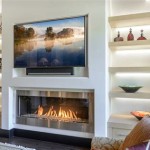Log Grates for Fireplaces: Enhancing Combustion and Fireplace Safety
A log grate is a foundational component within a wood-burning fireplace, serving a crucial role in optimizing the combustion process, improving airflow, and enhancing overall fireplace safety. Often overlooked, the selection and proper placement of a log grate can significantly influence the efficiency and enjoyment of a fire. This article delves into the various aspects of log grates, exploring their function, materials, styles, and considerations for choosing the appropriate grate for a specific fireplace.
The primary function of a log grate is to elevate firewood above the fireplace floor, creating the necessary air space for efficient combustion. Without a grate, firewood would rest directly on the hearth, restricting the flow of oxygen underneath the logs. This restriction would result in a smokier, less efficient fire, requiring more wood to generate the same amount of heat. A properly sized log grate allows air to circulate freely, feeding the flames from below and promoting a hotter, cleaner burn.
Furthermore, a log grate serves a protective function, preventing direct contact between the burning wood and the fireplace floor. This protection helps to prevent damage to the hearth, particularly in fireplaces constructed with softer materials like brick or stone. By containing the burning logs within a defined space, a log grate also aids in managing the fire, reducing the risk of logs rolling out of the fireplace and onto the surrounding floor, thereby mitigating potential fire hazards.
Key Point 1: Enhancing Airflow for Efficient Combustion
The fundamental purpose of a log grate is to improve airflow around the firewood. This is achieved by elevating the logs, creating an air channel beneath them. As the fire burns, air is drawn in from the front of the fireplace and flows under the grate, supplying oxygen to the base of the flames. This process is essential for complete combustion, where the wood burns more cleanly and efficiently, producing more heat and less smoke.
The design of a log grate directly impacts its effectiveness in facilitating airflow. Grates with wide spacing between the bars allow for greater air circulation but may not be suitable for smaller pieces of firewood. Conversely, grates with narrower spacing can accommodate smaller logs but may restrict airflow if the spacing is too tight. The ideal grate design balances the need for adequate airflow with the ability to securely hold the size and type of firewood being used.
The height of the log grate also plays a role in airflow efficiency. A taller grate creates a larger air channel, potentially increasing the amount of oxygen available to the fire. However, a grate that is too tall may also allow excessive air to flow through too quickly, cooling the fire and reducing its overall efficiency. The optimal height depends on the size of the fireplace and the draft within the chimney. Experimentation may be necessary to determine the best grate height for a particular fireplace setup.
The placement of the log grate is equally important. The grate should be positioned centrally within the fireplace, ensuring that it is not obstructed by the sides or back of the firebox. This allows for even airflow around the logs and prevents the fire from being confined to one area. Additionally, the grate should be positioned far enough back that burning embers do not fall directly onto the hearth, creating a potential fire hazard.
Key Point 2: Materials and Construction of Log Grates
Log grates are typically constructed from durable materials such as cast iron, steel, or a combination of both. The choice of material affects the grate's lifespan, heat resistance, and overall durability. Cast iron grates are known for their excellent heat retention properties, which can contribute to a more consistent and longer-lasting fire. However, cast iron can be brittle and prone to cracking under extreme stress or rapid temperature changes.
Steel grates, particularly those made from heavy-duty steel bars, offer superior strength and resistance to warping. Steel is less prone to cracking than cast iron and can withstand higher temperatures without significant degradation. Some grates incorporate a combination of cast iron and steel, utilizing cast iron for the legs and support structure while using steel bars for the grate surface. This combination can provide a balance of heat retention and durability.
The construction of a log grate is also critical to its performance and longevity. Grates with welded joints should be carefully inspected to ensure that the welds are strong and free from defects. Weak welds can fail over time, causing the grate to collapse under the weight of the firewood. Grates with bolted connections are generally more durable, as the bolts can be tightened or replaced if necessary. However, bolted connections may require periodic maintenance to ensure that they remain secure.
The size and thickness of the grate bars also influence its load-bearing capacity and resistance to warping. Thicker bars are better able to support heavy loads of firewood without bending or deforming. The spacing between the bars should be consistent and uniform, allowing for even airflow and preventing small pieces of wood from falling through. The overall design of the grate should promote structural stability and prevent it from tipping or rocking during use.
Key Point 3: Selecting the Appropriate Log Grate for Your Fireplace
Choosing the right log grate for a fireplace involves considering several factors, including the size and shape of the firebox, the type of firewood being used, and the desired burn characteristics. Measuring the firebox dimensions is the first step in selecting a grate. The grate should be slightly smaller than the firebox, allowing for adequate clearance on all sides. A grate that is too large will restrict airflow and may be difficult to maneuver within the fireplace.
The depth of the firebox is particularly important, as it determines the length of the grate. The grate should be long enough to accommodate the typical length of the firewood being used. If the grate is too short, the logs may overhang the front of the fireplace, creating a potential fire hazard. The width of the grate should also be appropriate for the width of the firebox, allowing for efficient airflow and even distribution of the firewood.
The type of firewood being burned can also influence the selection of a log grate. Softwoods, such as pine and fir, tend to burn faster and produce more creosote than hardwoods, such as oak and maple. If burning softwoods, a grate with wider spacing between the bars may be preferable to facilitate airflow and promote more complete combustion. Additionally, a grate with a built-in ash pan can help to contain the ash and reduce the risk of it spilling onto the hearth.
Finally, consider the desired burn characteristics when choosing a log grate. A taller grate with wider spacing between the bars will generally produce a hotter, faster-burning fire. This type of grate is suitable for those who want to quickly generate heat or enjoy a more visually dramatic fire. A shorter grate with narrower spacing between the bars will produce a slower, more controlled burn. This type of grate is ideal for those who want to maintain a fire for a longer period of time with less frequent refueling.
Proper maintenance of a log grate is essential for its longevity and performance. After each use, remove any accumulated ash and debris from the grate. Periodically inspect the grate for signs of damage, such as cracks or warping. If any damage is detected, the grate should be repaired or replaced to prevent it from collapsing during use. Applying a high-temperature paint to the grate can also help to protect it from rust and corrosion.
In summary, a log grate plays a critical role in optimizing combustion, improving airflow, and enhancing safety within a wood-burning fireplace. Selecting the appropriate log grate for a specific fireplace involves considering factors such as firebox size, firewood type, and desired burn characteristics. By understanding the various aspects of log grates, homeowners can make informed decisions that will improve the efficiency and enjoyment of their fireplace experience and maintain fireplace safety.

Fireplace Grates For Wood Burning Fireplaces

Singlyfire Fireplace Grate 30 Inch Heavy Duty Firewood Stove Log Holder Cast Iron Wrought Wood Burning Rack For Indoor Outdoor Chimney Com

Costway 18 In Fireplace Log Grate Heavy Duty Steel Firewood Burning Rack Holder H9i 10n282 S The Home Depot

Fireplace Log Grates High Quality Friendly Fires

Home Firewood Fireplace Accessories Grate

Fireplace Grates Guide Woodland Direct

Home

Keep Your Fire In The Right Place This Winter S Best Fireplace Grates

Stop Fireplace Grate Melt Down The Blog At Fireplacemall

Vevor Fireplace Log Grate 24 In Heavy Duty Solid Powder Coated Steel Bars Firewood Burning Rack Holder Ztxy4x3424y84pv0 The Home Depot
Related Posts








